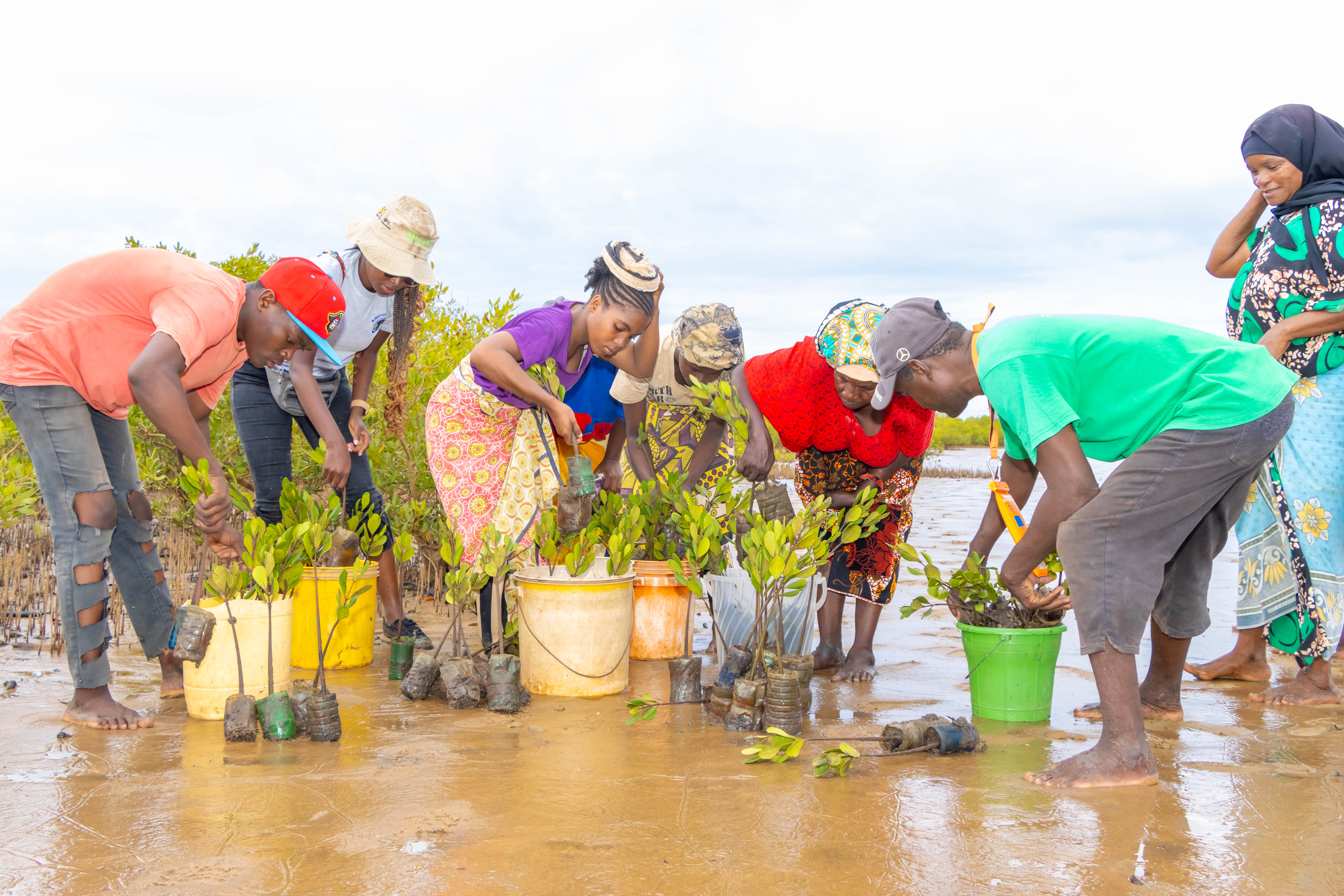🌿 Mangrove Restoration
We have lead community-driven mangrove restoration across the Shimoni–Vanga seascape and other coastal areas in Kenya. Working closely with the Kenya Forest Service (KFS) and Community Forest Associations (CFAs), we align our restoration work with the National Mangrove Ecosystem Restoration Guidelines and WIO-GMER standards.
Our goal: to restore ecosystem health, strengthen community stewardship, and enhance climate resilience through inclusive, data-informed action.


💡 Why It Matters
Mangroves are nature’s frontline defenders they store carbon, protect shorelines, and provide breeding grounds for marine life. Yet, degradation driven by overharvesting, pollution, and land conversion threatens their survival.
By restoring mangrove ecosystems, we’re not just planting trees, we’re protecting coastal livelihoods, reviving biodiversity, and creating green jobs.
⚙️ How It Works
We restore mangrove forests through participatory, science-based approaches:
- 🌿 Site-specific restoration: Ecological assessments guide the right species for the right zones.
- 🧑🏾🤝🧑🏽 Community involvement: CFAs, Eco-credit members, and KFS officers jointly plan, plant, and monitor.
- 🌿 Locally propagated seedlings: Ensuring healthy, climate-adapted planting stock.
- 📋 Monitoring framework: Survival rates, canopy recovery, sediment accretion, and growth tracked at 3, 6, and 12 months.

The Impact
📊 Milestones & Impact
- 🌱 3.1 ha restored in April 2025 across four sites — Majoreni, Funzi, Bodo, and Chete cha Kale.
- 🌳 8,790 seedlings planted — mainly Rhizophora mucronata, Ceriops tagal, and Avicennia marina.
- 👥 Community-led planting teams included Eco-credit members, CFAs, and KFS officers, enhancing ownership and accountability.
- 📈 Total area restored so far 6.7 ha, strengthening the seascape’s natural resilience.
- 🤝 Collaborations strengthened with KFS and local CFAs to ensure long-term protection and data-driven monitoring.
- 🧩 Restoration challenges addressed: limited Avicennia marina seedlings and hydrological constraints in Mwandamu are being managed through improved nursery propagation and site planning.
6.7 ha
“I have witnessed a lot of participation by the community members who now understand the importance of protecting and restoring mangroves in degraded areas. This is an indicator that there is hope for our ecosystem.” — Mwasefu Shaali V. Chairperson, Community Forest Association (CFA)
“I have witnessed a lot of participation by the community members who now understand the importance of protecting and restoring mangroves in degraded areas. This is an indicator that there is hope for our ecosystem.” — Mwasefu Shaali V. Chairperson, Community Forest Association (CFA)

Stay updated
Our annual newsletter highlights our program impacts and updates on livelihood and conservation activities and milestones.
.png)




